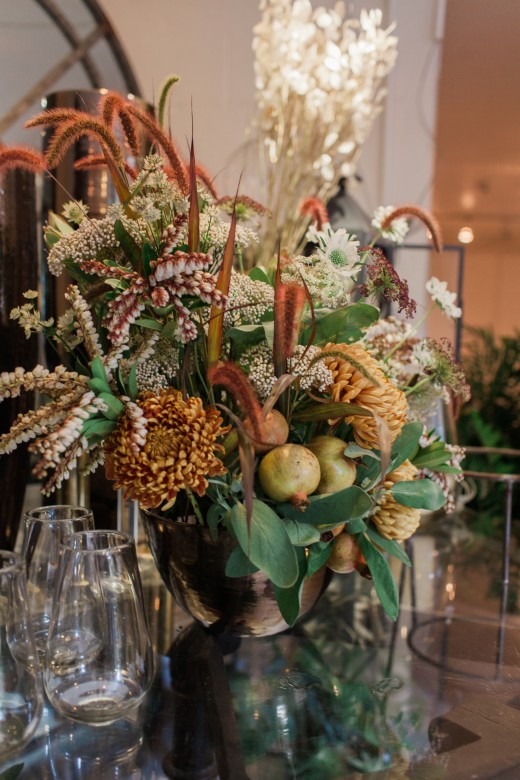Brooklyn Botanic Garden is host to the Ecological Landscape Alliance (ELA) third annual Ecological Plant Conference at Brooklyn Botanic Garden, Brooklyn, New York. Join us on December 7 from 8 – 5 as five plant masters discuss a few valuable plants at length, from native perennials to under-story heroes to top performing trees. Cultivation, propagation, behavior, and ecological function will be highlighted, with an emphasis on plant communities. Presenters will delve into the interactions between individual plants and the complex interactions among plant communities, as well as interactions with the plant’s environment.
Noted plant masters Carol Gracie, Andi Pettis, Laura Hansplant, Bill Logan, and Don Leopold will lead this rare opportunity to delve into the world of plants.
This conference is an opportunity for professional gardeners, horticulturists, landscape architects, and designers to explore deeply the cultivation of the plants professionals in the Northeast work with every day. Speakers will share their expertise with plant selection, pruning techniques, and long-term plant care, offering the necessary information to grow and create healthy, dynamic, and beautiful plant communities. Morning coffee and catered lunch are included with registration. $119 for ELA members, $139 for nonmembers. Register at www.ecolandscaping.org.
The High Line’s Urban Nature: Tenacious Plants for Tough Places
~Andi Pettis
The High Line’s renowned plantings are inspired by the natural landscape that grew wild there, before the elevated rail line was transformed into a New York City public park.
In this talk, Andi Pettis will present some of the toughest plants growing on the High Line, both the cultivated species and some of the plants that grew wild on the rail tracks, spontaneously and without any care or thought from human beings. She will explore how we can study the spontaneous nature in urban environments in order to glean lessons about the tenacity of plants, and how we can apply those lessons to our ecological landscapes.
Pioneering Higher Ground – Explorations in Designing Rooftop Habitats
~Laura Hansplant
Why can native volunteer plants thrive on green roofs while the same intentional plantings fail? How can rooftop landscapes support urban habitat with the same resilience as sedum roofs? What lessons can we learn for on-ground landscapes? Rooftop environments offer unique opportunities for urban habitat. The ecology of these plant communities parallels natural, thin-soil environments but also presents some important functional differences. In this session, Laura Hansplant compares alternative design approaches to establishing meadows on green roofs based on observations of plant community dynamics and tracking plant performance at pilot projects over the past fiver years.
The Thousand Year Wood: Past, Present and Future of People and Oaks
~William (Bill) Bryant Logan
Oaks and people have been intimately related since the Mesolithic, at the latest. Bill will sketch the long history of that relationship, including the many things that oak taught us. We will look from Japan, to Europe, to California, considering the intimate relationship between people and oaks. He will look at the present possibilities for planting and maintaining oaks in the landscape, considering the preferences of different species and where they are best placed in the landscape. Finally, Bill will examine the current threats to oak trees from newly-arrived pathogens and discuss how these potential problems should adjust the way we plant and care for oaks.
Native Wildflowers – Beyond Their Beauty: How They Integrate into the Environment
Carol Gracie
Although the beauty of local wildflowers enhances our enjoyment of the outdoors in summer, a look behind the flowers’ beauty reveals the important roles that they play in the ecology of our northeastern environment. Carol Gracie look at how the plants have adapted to their habitats, their role as a food resource for insects, their methods of dispersal, and some of their uses by humans as medicines, foods, and dyes. Our native wildflowers also provide easy-care beauty in our home gardens.
Native Plants and Natural Plant Communities for Difficult Sites
~Donald (Don) J. Leopold
An expert on native species, Don Leopold will go into depth of native herbaceous and woody species that are no maintenance, long-lived, adapted to extreme conditions (e.g., salinity, alkalinity, drought, shade), attract wildlife (especially birds and butterflies), are deer-proof, and/or produce food for people. Native species for the most challenging sites will be highlighted. The ecological role of these species in their natural communities and how these assemblages of species can be used for home gardens as well as urban projects and larger scale restoration of degraded industrial landscapes will also be covered.










